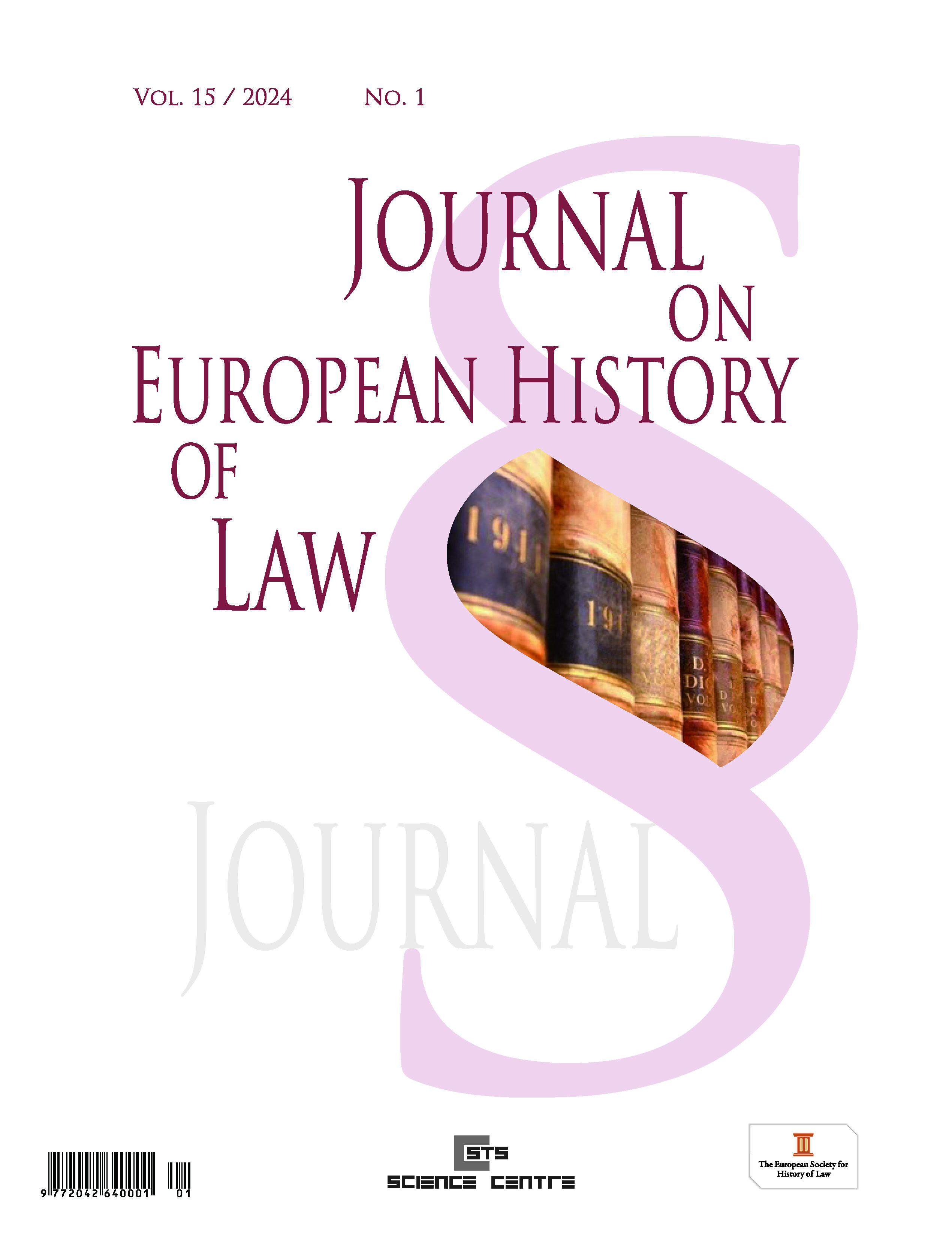Die doppelgesichtigen Gerichte“ – Einige charakteristische Merkmale der neuen untergeordneten Gerichte (iudicia subalterna) in Ungarn und Siebenbürgen (1787 – 1790)
“Two-faced Courts” – Some Key Features of New Subordinate Courts /iudicia subalterna/ in Hungary and Transylvania /1787–1790/
Author(s): András BiczóSubject(s): History, Law, Constitution, Jurisprudence, History of Law, 18th Century
Published by: Evropská společnost pro právní dějiny, z.s.
Keywords: Joseph II.; Novus ordo iudiciarius; iudicium subalternum; sedria; court system;
Summary/Abstract: In 1785, Joseph II set out to introduce “a new judicial order” (Novus ordo iudiciarius) in the Kingdom of Hungary and its neighbouring lands (Regnum Hungariae partes et eiusdem adnexas), as well as the Grand Principality of Transylvania (Magnus Principatus Transilvaniae). As a result of the Emperor’s comprehensive and rapid judicial reform, which went against the historical constitution of the country and was therefore opposed by Hungarian and Transylvanian estates, new subordinate or subaltern (first-instance) courts (iudicia subalterna) were established in Hungary and Transylvania. On 1 September 1787, 38 courts in the Kingdom of Hungary and its neighbouring lands and 11 courts in the Grand Principality of Transylvania officially had to start their operation. The new judicial bodies took over the place of the former country courts (sedes iudiciariae i. e., sedriae), which were terminated on 31 August 1787. Although the iudicia subalterna were “short-lived” because the entire judicial system known as Novus ordo or Justitia Josephina collapsed in 1790, shortly after the death of Joseph II, the more in-depth examination of the josefinist first-instance courts is still considered a research field that has not been fully explored yet. However, the new judicial reform removed the sedriae, in fact, the distinction between iudicia subalterna and sedriae was not as sharp as it appeared, at first glance, from the rules related to the new first-instance courts. By analyzing archival sources of some iudicia subalterna and relevant secondary literature, the paper aims to shed light on the dual nature of these courts. The research uses the term “two-faced” to describe how the dividing line between iudicia subalterna and sedriae, royal court and municipal court, politica and iuridica could become blurred in Novus ordo. To illustrate this phenomenon, the paper primarily relies on the general concepts applied in studies that focus on the history of the court system and it uses the various names of the iudicia subalterna as a guideline.
Journal: Journal on European History of Law
- Issue Year: 15/2024
- Issue No: 1
- Page Range: 113-126
- Page Count: 14
- Language: German

